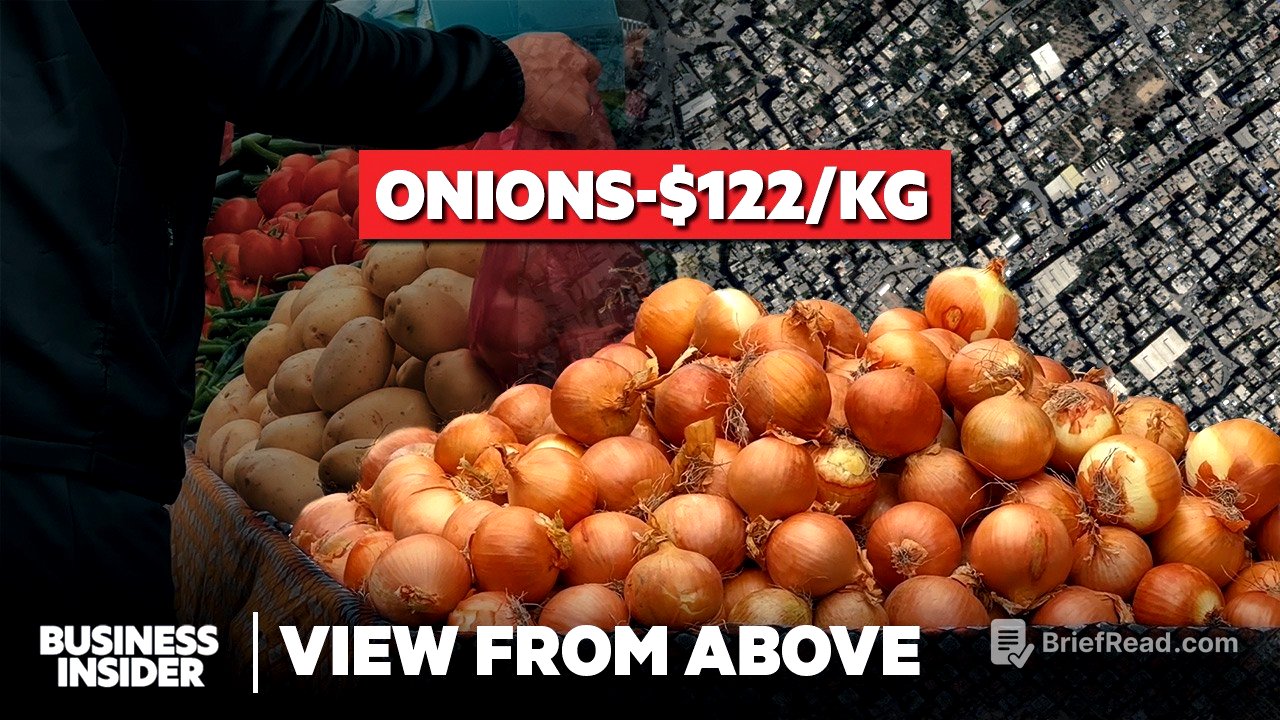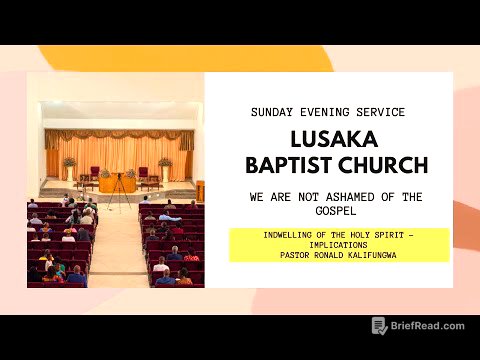TLDR;
This video explores the dire economic and humanitarian crisis in Gaza, focusing on the collapse of the banking system, hyperinflation, and the dangerous struggle for food and aid. It highlights the destruction of financial infrastructure, the emergence of black markets for aid, and the perilous conditions at aid distribution centers.
- Banking system collapse: 98% of banks destroyed, no new currency allowed in.
- Hyperinflation: Prices of basic goods skyrocket, with flour costing up to $891 per sack.
- Aid distribution dangers: Thousands killed while trying to collect aid due to chaotic and violent conditions.
- Black markets: Aid intended for free distribution is sold at exorbitant prices.
Intro [0:00]
Gaza's banking system is destroyed, leading to a desperate hunt for money. Two years into the war, even the currency is deteriorating. Basic goods can cost 50 times more than before, with a kilogram of flour reaching $35 when aid is blocked. Most people have exhausted their savings and risk their lives seeking aid. The video maps out Gazans' daily struggle to obtain food, navigating currency dealers, inflation, and dangerous aid distribution points.
The Broken Banks [1:20]
Before the war, Gaza had 56 bank branches and 91 ATMs. Now, 98% of them are destroyed or damaged, according to the World Bank. Gaza uses the Israeli shekel, and since the war began, no new cash has been allowed in, causing even the bills to fall apart.
Meet the Money Fixer [2:01]
With no new currency to replace damaged bills, a small trade has emerged to repair them using tape and glue. Phone payment apps have gained some traction, but many vendors either don't accept them or charge a steep markup for cashless transactions. This forces people to turn to currency dealers.
The Currency Dealers [2:44]
Currency dealers function like ATMs, where people transfer money through an app and receive cash. However, they lose half their money in fees for every shekel withdrawn. Journalist Yaser Abua filmed one of the few spots in Balah where these dealers operate. Dealers charge about 5% and with the $200 that Yaser withdrew, most of it will be spent on basic items like flour and dates.
The World's Most Expensive Market [4:00]
Many markets across Gaza have been destroyed, shifting trade to improvised open-air stalls that appear wherever it's deemed safe, and only if there's anything left to sell. At their peak, goods have sold for up to 10 times their pre-war prices. For example, a 25 kg sack of flour that cost $10 before the war could cost up to $891 when supplies are low. This hyperinflation rivals some of the worst economic collapses in recent history, and much of what is being sold is aid that was meant to be distributed for free, now sold on black markets.
The Deadly Food Distribution Centers [5:20]
Gazans without the money to buy goods on the black market must face the dangers at one of the four aid distribution sites run by the Gaza Humanitarian Foundation (GHF) or face starvation. People described these sites as feeling like a real-life Squid Game, with individuals taking cover from Israeli fire until told to move. The UN used to run a wide network of distribution sites, but since March 2025, Israel has restricted the work of UN agencies. Fewer distribution sites combined with greater need have increased the risks. According to the UN, at least 2,000 Gazans were killed while trying to collect aid between the end of May and the beginning of September 2025.
The Truck Chokepoint [8:37]
Before the war, around 500 food trucks entered Gaza. By the summer of 2025, Israel only allowed about 80 to cross the border. Almost all trucks sent by the UN end up being looted, while those headed for the four GHF sites are given armed guards. Satellite images show crowds waiting for aid, sometimes engulfing entire convoys of trucks.
When Aid Finally Arrives [10:05]
On the day Yaser filmed, a small amount of aid reached Gaza through trucks and aid drops, causing prices to dip slightly. This illustrates the basic economic principle that when supply increases, prices decrease, though they remain far higher than before the war. Many believe the scarcity is deliberate.
An Economy in Ruins [10:45]
Whether Gazans obtain food from the market, trucks, or distribution sites, every step is a battle that has become more expensive, desperate, and deadly. The situation has led to missed opportunities and a sense of lives being irrevocably altered by the hardships endured.




![[단독] 김영훈, 5년치 지방소득세 안 내다 '지각 납부'…집시법 등 전과 5범 [뉴스9]](https://wm-img.halpindev.com/p-briefread_c-10_b-10/urlb/aHR0cDovL2ltZy55b3V0dWJlLmNvbS92aS9XWEdKZ3daSXJwMC9ocWRlZmF1bHQuanBn.jpg)




